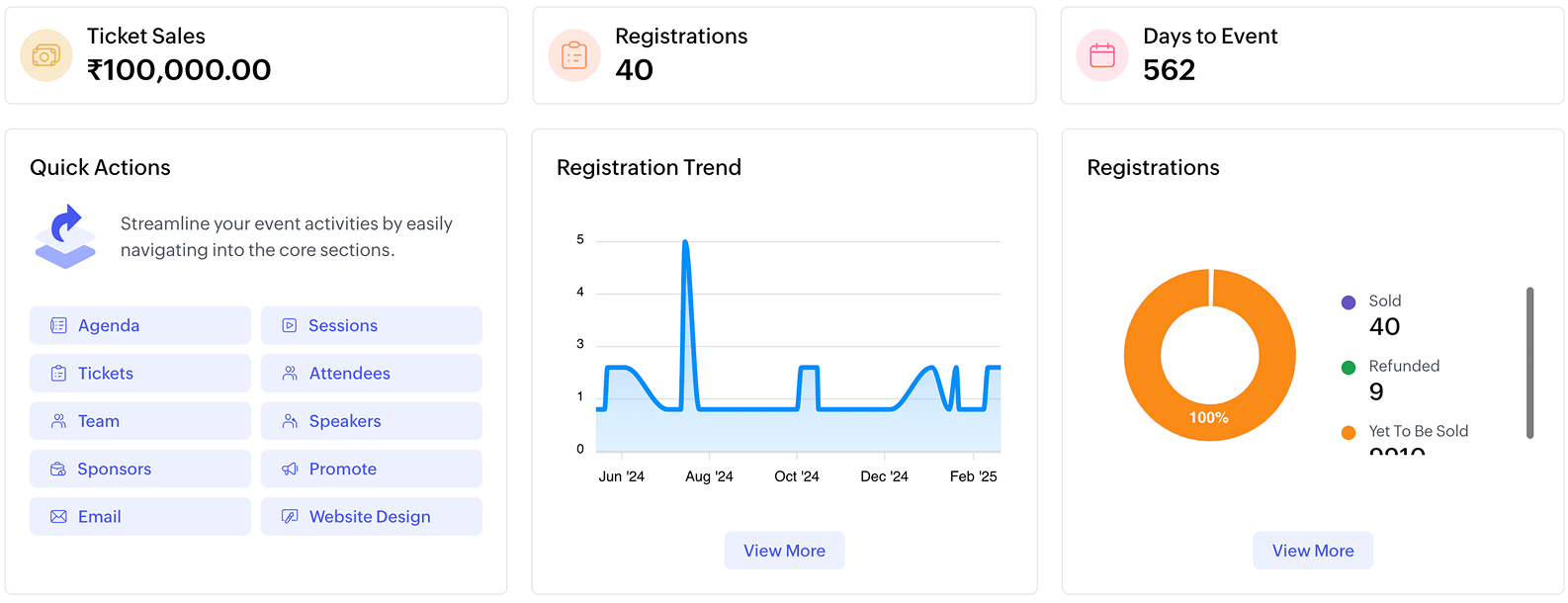1. Centralized event management hub
Using multiple tools to manage your event creates major headaches. Research shows that teams waste 45% of their time just switching between different software platforms. A centralized event management hub addresses this challenge by consolidating core functions - from registration and scheduling to attendee engagement - into a unified dashboard.
Key Capabilities:
- Real-time performance metrics: Tracking ticket sales, attendance, and session analytics.
- Workflow automation: Systematic management of communications and updates.
- Integrated collaboration tools: Streamlined coordination for all event-related activities.

Challenge:
A global technology conference with thousands of attendees and multiple concurrent tracks would face significant inefficiencies using disconnected systems. Without a central hub, the event team might struggle with:
- Registration Delays: Attendees' information may not appear during check-in, causing long lines and frustration.
- Manual Data Transfers: Exporting attendee lists between platforms increases errors and delays.
- Session Capacity Issues: Popular breakout sessions may fill up, but late arrivals might still receive outdated notifications.
- Communication Breakdowns: Manual updates for speaker changes risk delayed emails and conflicting schedules.
- Lead Capture Delays: Exhibitor badge scans might take hours or days to sync with CRMs, slowing follow-ups.
- Complicated Reporting: Pulling data from multiple sources makes it difficult to track attendance, engagement, and ROI in real time.
Solution:
A centralized event management hub automates workflows and synchronizes data across all touchpoints, ensuring seamless operations:
- Instant Check-Ins: Attendee information updates instantly after registration, speeding up arrivals.
- Automated Schedule Updates: Changes to session times or speaker lineups automatically update on the event website, mobile app, and email notifications.
- Real-Time Notifications: Push notifications alert attendees of schedule changes, ensuring they stay informed.
- Lead Capture Integration: Exhibitors scan attendee badges, and data instantly syncs with their CRM, enabling faster follow-ups.
- Live Analytics: Dashboards show real-time attendance, engagement rates, and exhibitor interactions, helping the team monitor performance as the event unfolds.
For example, Zoho Backstage's unified dashboard gives event teams complete visibility and control - from real-time registration tracking to instant schedule updates across all attendee touchpoints.

With all processes consolidated into a single platform, the event team eliminates data synchronization delays, reduces manual tasks, and improves communication with attendees and exhibitors. This results in a seamless attendee experience, improved exhibitor ROI, real-time insights and improved operational efficiency.
Feature checklist
- Real-time performance dashboard
- Single-view management interface
- Automated workflow capabilities
- Multi-channel communication tools
- Synchronized data across all touchpoints
- Real-time capacity management
- Integrated project management tools












